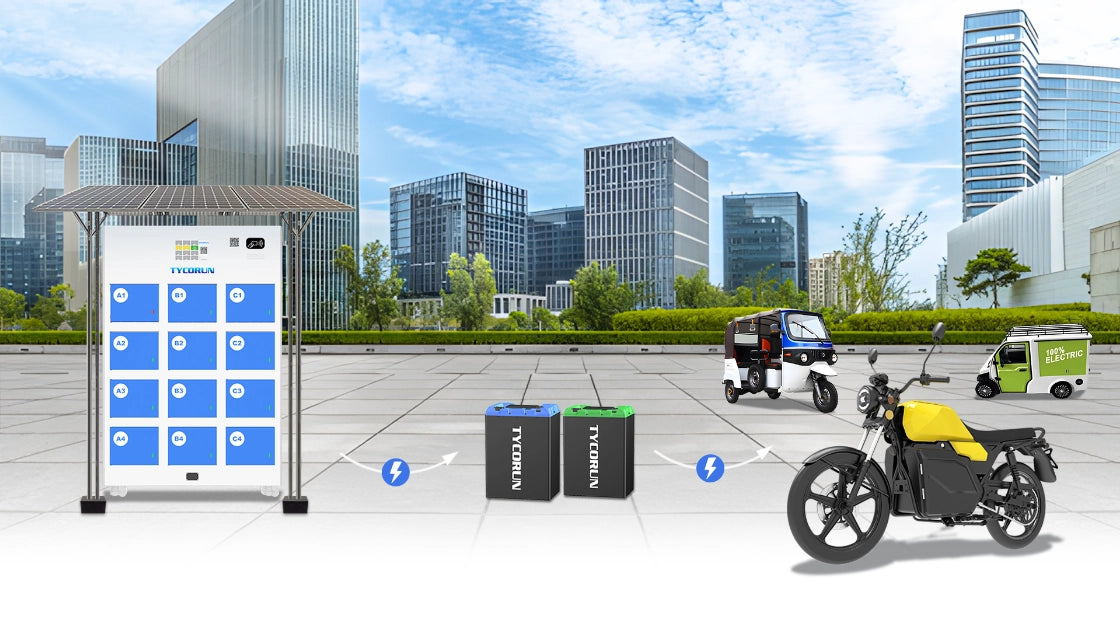Lithium salts are essential components of battery electrolytes, but many wonder, what are lithium salts and why are they so important? These compounds allow lithium ions to move smoothly between electrodes, ensuring efficient energy transfer and stable battery operation. Research shows how their performance varies under different conditions. By carefully selecting and optimizing lithium salts, batteries can achieve higher energy density, longer cycle life, and reliable performance for industrial applications. This article will explain what are lithium salts, their key roles in batteries and how they impact safety. Let's dive in!

Main content:
- What are lithium salts?
- Where do lithium salts come from?
- Are lithium salts safe?
- Key Functions of Lithium Salts in Battery Electrolytes
- Importance of Lithium Salts in Battery Electrolytes
- How Lithium Salts Affect Battery Performance and Lifespan
- What is the most common lithium salt?
- How Lithium Salts Are Manufactured
- FAQs
What are lithium salts?

Lithium salts are specialized chemical compounds containing lithium ions (Li⁺) bonded with other elements, typically appearing as white, crystalline powders. When dissolved in solvents, they form electrolytes, a key component in lithium-ion batteries that enables efficient energy flow between electrodes. Unlike ordinary table salt, these engineered compounds are designed to enhance battery performance, stability, and longevity, making them essential for modern electronics, electric vehicles, and renewable energy storage systems.
Where do lithium salts come from?
Lithium is sourced mainly from brine in salt lakes and hard rock deposits. Brine extraction is cheaper and more common but produces lower-grade lithium, while hard rock mining costs more yet yields higher purity.

Because lithium appears only in trace amounts and remote areas, extraction is challenging. Large deposits exist in South American salt deserts, though seawater and certain rocks worldwide also contain this vital battery material.
Are lithium salts safe?
When discussing what are lithium salts, safety naturally becomes an important topic — especially in lithium-ion batteries safety. Compounds such as LiPF₆ are considered stable during normal use, but they can pose risks when exposed to heat, moisture, or physical damage. Under extreme conditions, certain salts like LiPF₆ may decompose and release corrosive or toxic gases.
To prevent these hazards, modern battery systems use thermal controls, moisture-resistant seals, and advanced management software to maintain safe operation. Meanwhile, researchers are developing safer, non-flammable lithium salts that could make the next generation of batteries even more reliable and environmentally friendly.
The development of lithium salts include:
- High-Voltage Ready: Modern salts like LiFSI enable batteries to handle higher voltages, boosting energy storage capacity.
- Eco-Friendly Focus: Scientists are developing lithium salts with smaller environmental footprints, sometimes using renewable sources.
- Recyclable Design: New formulations make it easier to recover and reuse salts during battery recycling, supporting sustainability.
Key Functions of Lithium Salts in Battery Electrolytes
- Facilitate Ion Conduction and Energy Transfer
Lithium salts dissociate into lithium ions and counterions in the electrolyte, allowing ions to move between the anode and cathode during charging and discharging. This movement is essential for efficient energy transfer in devices such as robotics, electric vehicles, and consumer electronics.
- Enhance Electrochemical Stability and Longevity
These salts help form a solid electrolyte interface (SEI) layer on the anode, which protects the battery from side reactions and electrolyte decomposition. By maintaining a stable environment, lithium salts like LiPF₆ and LiFSI extend the cycle life of lithium-ion batteries, especially in high-voltage applications.
- Boost Energy Density and Power Output
Lithium salts improve ionic conductivity, supporting faster charging and discharging. They help increase energy density, making batteries compact and lightweight, while optimizing power output and efficiency for both consumer and industrial applications.
Importance of Lithium Salts in Battery Electrolytes
Lithium salts are essential for the proper functioning of lithium-ion batteries, but you might wonder, what are lithium salts? They are chemical compounds that contain lithium ions and play a key role in enabling the smooth movement of these ions between electrodes, which is critical for energy transfer. Beyond supporting ion conduction, lithium salts also help stabilize the battery’s thermal and chemical environment, ensuring safe and efficient operation.

A common example, LiPF₆, demonstrates these benefits clearly. It provides high ionic conductivity, forms a stable SEI layer, and dissolves effectively in organic solvents, making it ideal for industrial applications as well as consumer electronics, robotics, and electric vehicles.
How Lithium Salts Affect Battery Performance and Lifespan
- Cycle Life – The type and concentration of lithium salt determine how many times a battery can be charged and discharged before its performance drops.
- Charging Speed – Proper lithium salts allow faster ion movement, enabling quicker charging without compromising safety.
- Operating Temperature Range – The right salts help batteries function efficiently across a wider range of temperatures.
- Safety and Stability – Poorly chosen salts can cause dendrite formation, leading to short circuits or battery failure, while suitable salts maintain chemical stability.
- Energy Density – Lithium salts influence how much energy a battery can store, affecting its overall efficiency and runtime.
What is the most common lithium salt?
Recent research shows that different lithium salts offer distinct benefits and limitations. Choosing the right one depends on the battery’s intended use.

Comparison of Common Lithium Salts:
- LiPF₆ – Offers excellent ionic conductivity and forms a stable SEI layer, but it has limited thermal stability.
- LiBF₄ – Performs well over a wide temperature range, though its ionic conductivity is relatively low.
- LiFSI – Provides high conductivity and is less sensitive to moisture, but it can corrode aluminum foils.
- LiTFSI – Highly soluble and thermally stable, yet it may also cause corrosion on aluminum current collectors.
For instance, LiFSI is ideal for high-performance batteries due to its conductivity and stability, while LiBF₄ is better suited for applications exposed to extreme temperatures.
How Lithium Salts Are Manufactured
Making lithium salts requires careful chemical processes. The basic steps are:
- Extract Lithium – Lithium is taken from natural sources like brine or hard rock.
- Create the Salt – The lithium is combined with acids or fluorine-based chemicals to form lithium salts.
- Purify and Dry – The salts are cleaned to remove any water or impurities and then dried.
- Package for Use – Finally, the purified salts are stored in containers that protect them from moisture, ready to be used in batteries.
Because the process is complicated and expensive, only a few companies produce the high-quality lithium salts needed for battery production.
FAQs
What do lithium salts do in a battery?
Lithium salts help lithium ions move between the battery’s electrodes, which allows energy to flow. They also keep the electrolyte stable, improving the battery’s performance and lifespan.
How do lithium salts affect battery safety?
Salts that handle heat well can prevent problems like overheating or thermal runaway. Advanced salts such as LiFSI make batteries safer, especially in high-temperature conditions.
Are lithium salts good for the environment?
Some traditional lithium salts can be harmful to the environment. Newer salts are designed to be less toxic, easier to recycle, and made using greener methods to support sustainability.
Related Articles: Lightweight battery packs, Lithium battery technology, Charging lithium batteries
















